Japan's Amazing Love of All Things Cat
Japan is pretty big on cats. Most places in the world like cats, but there are some pretty unique twists on this love for cats in Japan. Japan has cat girls, lucky cats, stray cats, wild cats, island cats, ramen cats, train cats, and cat cafes. That's a lot of cats in one sentence or for an island country. Cats are cute and so are the cosplaying cat girls. In anime, you have animated cat girls that are supposed to be real. I'd suspect that Neko on the brain applies here in a good way. I started out with a short article and it turned into this long one. Enjoy!
Neko Astray - An urban fantasy short story where you help a lost cat find its way home in Tokyo.
Cat Girls
Girls that are cats or girls that dress up like cats are a pretty common theme in Japanese pop culture. They are also popular in cosplay where real people dress up and have cat-like characteristics such as cat ears and tails and exhibit cat-like traits (e.g. see the paw gesture below).
Lucky Cat
The Maneki-neko (literally "Beckoning Cat); also known as Welcoming Cat, Lucky Cat, Money Cat, or Fortune Cat) is a common Japanese figurine (lucky charm, talisman), usually made of ceramic, which is believed to bring good luck to the owner. The origin myths behind this cat are pretty interesting. This cat is usually displayed in shops, restaurants, pachinko parlors, and other businesses.
Cat Islands
There are two famous islands involving cats in Japan. One is a tropical rainforest island that has a large national park and the second is famous for its many cats that are everywhere bringing good fortune.
Iriomote is one of the Okinawan islands. It is the largest of the Yaeyama Islands and the second largest in Okinawa Prefecture after Okinawa Island itself. The total population is less than 2,000 and a single coastal road connecting the hamlets on the northern and eastern shores. The island does not have an airstrip, and most visitors—over 150,000 in 2003—arrive from Ishigaki by ferry. Iriomote belongs to tropical rainforest climate and 90% of the island is covered by dense jungle and mangrove swamps. Over a third of the island forms the Iriomote National Park.
The island is famed for the Iriomote Cat, a Critically Endangered wild cat found only on Iriomote. The population size is estimated to be fewer than 250 adult individuals. In Japanese the cat is called 西表山猫 Iriomote-yamaneko. The manga and anime Azumanga Daioh made the little wild cat famous (to me at any rate!).
Tashirojima lies in the Pacific Ocean off the Oshika Peninsula,
to the west of Ajishima. It is an inhabited island, although the
population is quite small (around 100 people, down from around 1000
people in the 1950s).
It has become known as "Cat Island" due to the large stray cat
population that thrives as a result of the local belief that feeding
cats will bring wealth and good fortune. The cat population is now
larger than the human population on the island. (A 2009 article in
Sankei News says that there are no pet dogs and it is basically
prohibited to bring dogs onto the island.) Since 83% of the population is classified as elderly, the island's
villages have been designated as a "terminal villages" (限界集落) which
means that with 50% or more of the population being over 65 years of
age, the survival of the villages is threatened. The majority of the people who live on the island are involved either in fishing or hospitality.
Cat Cafes
There are also cat cafes where Japanese people who cannot own pets or do not have the time to take care of them can unwind after a long day. They can have some refreshment and play or cuddle a cat before they head home. There are also bunny cafes (of the rodent variety) but that would be for another day.
View Odaiba Where Gundam Front Diver City and the Miraikan Are in a larger map
There is a the Neko Ramen gag manga about a cat who is a ramen chef. Some of it is funny but some of it is just strange. You also get cat hair in your soup. The Ramen Museum in Yokohama used him as a mascot too.
Sleeping Cat Who is Apologizing Meme
m(_ _)m
The character string above says it all in e-mails and texts. It represents a front view of a sleeping cat with its head and eyes down on its paws. The posture of a sleeping cat like this also look like a deep bow for someone who is seriously being sorry. In Japanese they call it "gomen ne."
Cat Shrine
Tokyo has two famous cat shrines where you can pray for luck from a kitty or for a kitty. Gotokuji Temple is a Buddhist temple known for its cat shrine that has thousands of lucky cat figurines. Imado Shrine is the other famous cat shrine that features cat statues and it is known as a shrine for love relationships. Gotokuji Temple is the more famous of the two shrines due to the presence of thousands of beckoning cat statues on the temple grounds, making it very photogenic.
Both holy sites have a different origin story for the maneki-neko, but they involve a white cat beckoning a lord to shelter / safety in the temple or shrine during a thunderstorm. My favourite version has the cat saving the life of a lord who was sheltering under a tree which was struck by lightning after he goes to the cat. The lord then bestows land and favours on the temple.
Hello Kitty
Everyone knows who Hello Kitty is, right? Who doesn't know Japan's most famous cat icon from Sanrio? Sanrio doesn't say she is a cat though, but rather that she is a girl, and leaves it at that.
Hello Kitty is not a cat.
Tama - The Station Master Cat
In 2005 all stations on the Kishigawa Line went from manned to unmanned in an effort to cut costs. Station masters were selected from employees of local businesses near each station. For Kishi station, Toshiko Koyama, the neighborhood grocer, was selected as station master. Koyama had adopted Tama and other stray cats, and she fed them at the station. In January 2007, railway officials decided to officially name Tama the station master. As station master her primary duty is to greet passengers. The position comes with a stationmaster's hat and the railway provides Tama with free cat food instead of a salary. Tourists flocked to see this official cat! While the original Tama has passed on in an impressive Shinto ceremony, a successor was groomed and has assumed the duties of station master.
Follow me on Twitter a @Tostzilla or my feedburner
More cup noodle / instant ramen reviews and Japanese pop culture.
Revised on July 4, 2020, original post on April 1, 2012
 |
| Sleeping Cat Flickr / rahen z |
Neko Astray - An urban fantasy short story where you help a lost cat find its way home in Tokyo.
Cat Girls
Girls that are cats or girls that dress up like cats are a pretty common theme in Japanese pop culture. They are also popular in cosplay where real people dress up and have cat-like characteristics such as cat ears and tails and exhibit cat-like traits (e.g. see the paw gesture below).
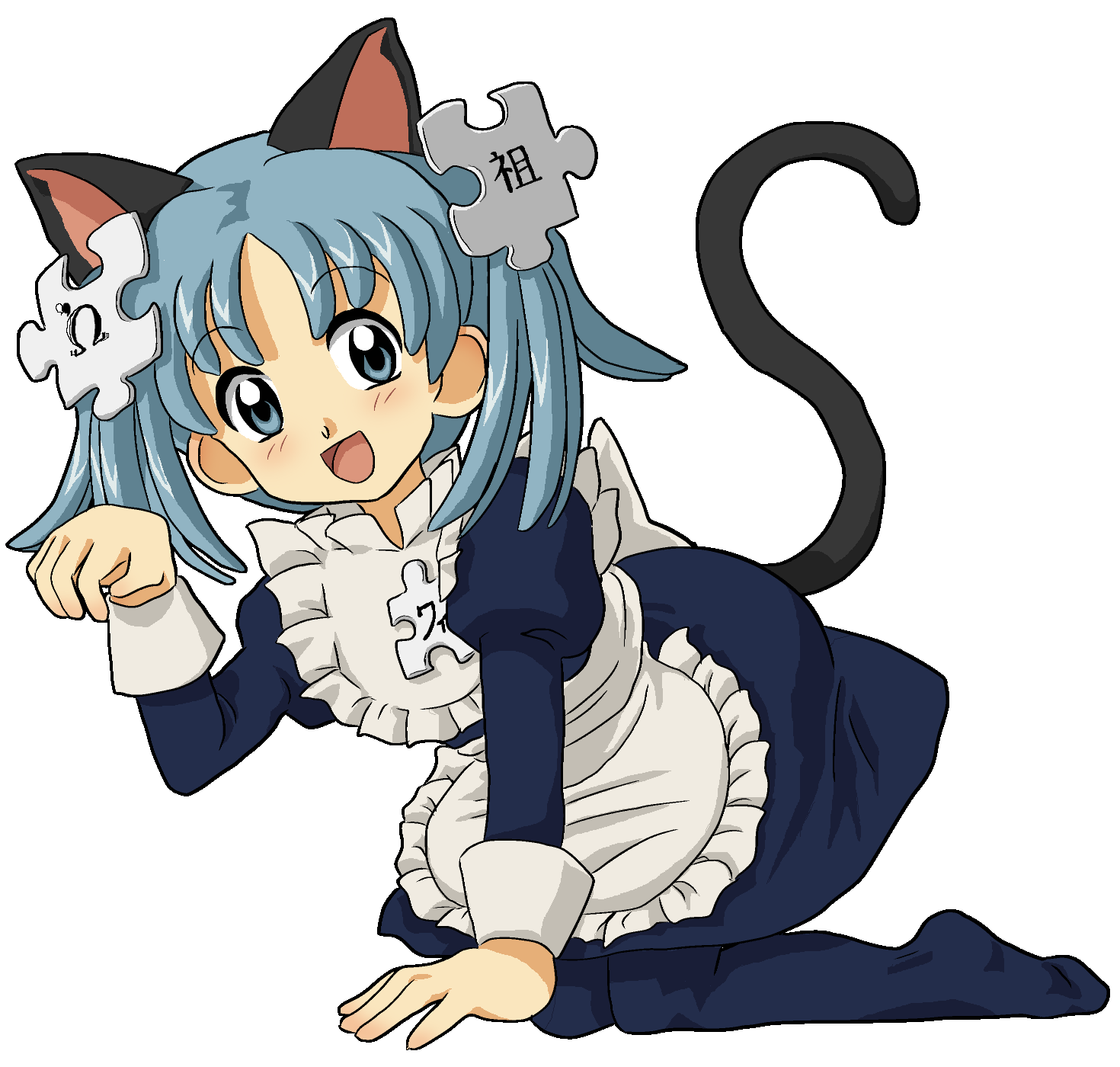 |
| Cat Girl Wikipe-tan Wikimedia Commons. |
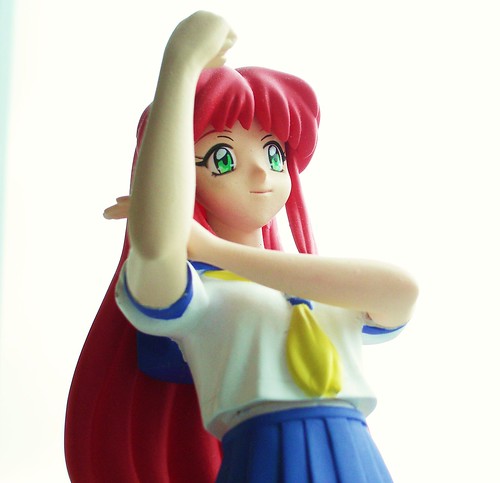 |
| All-purpose Cultural Cat Girl Nuku Nuku Flickr / Selva |
Lucky Cat
The Maneki-neko (literally "Beckoning Cat); also known as Welcoming Cat, Lucky Cat, Money Cat, or Fortune Cat) is a common Japanese figurine (lucky charm, talisman), usually made of ceramic, which is believed to bring good luck to the owner. The origin myths behind this cat are pretty interesting. This cat is usually displayed in shops, restaurants, pachinko parlors, and other businesses.
 |
| Lucky Cat (right paw up brings good luck and wealth) |
Cat Islands
There are two famous islands involving cats in Japan. One is a tropical rainforest island that has a large national park and the second is famous for its many cats that are everywhere bringing good fortune.
Iriomote is one of the Okinawan islands. It is the largest of the Yaeyama Islands and the second largest in Okinawa Prefecture after Okinawa Island itself. The total population is less than 2,000 and a single coastal road connecting the hamlets on the northern and eastern shores. The island does not have an airstrip, and most visitors—over 150,000 in 2003—arrive from Ishigaki by ferry. Iriomote belongs to tropical rainforest climate and 90% of the island is covered by dense jungle and mangrove swamps. Over a third of the island forms the Iriomote National Park.
The island is famed for the Iriomote Cat, a Critically Endangered wild cat found only on Iriomote. The population size is estimated to be fewer than 250 adult individuals. In Japanese the cat is called 西表山猫 Iriomote-yamaneko. The manga and anime Azumanga Daioh made the little wild cat famous (to me at any rate!).
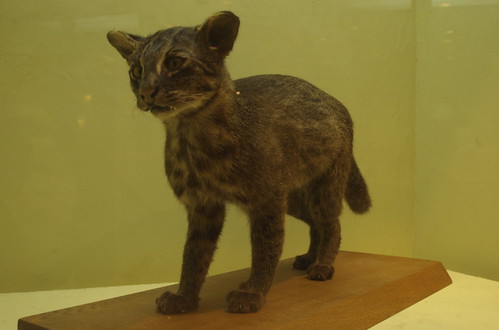 |
| Stuffed Yama Neko at museum there (sad...) Flickr / jamesfarnham |
 |
| Cat Flickr / rahen z |
 |
| Cat Shrine on Tashirojima Flickr / rahen z |
There are also cat cafes where Japanese people who cannot own pets or do not have the time to take care of them can unwind after a long day. They can have some refreshment and play or cuddle a cat before they head home. There are also bunny cafes (of the rodent variety) but that would be for another day.
 |
| Nyan da Cafe entrance is very cute! See map below for location in Odaiba. Flickr / Acetonic |
- Nyan da Cafe article for cafe in Odaiba at the Decks, Tokyo
- http://www.vice.com/en_ca/read/meow-meow-meow-329-v17n2
- http://www.cnngo.com/tokyo/drink/tokyo-cat-cafes-006992
- Cat Cafe Video. http://www.guardian.co.uk/travel/video/2012/feb/03/tokyo-cat-cafe-video
- http://www.catsparella.com/2012/02/inside-tokyos-calico-cat-cafe.html
There is a the Neko Ramen gag manga about a cat who is a ramen chef. Some of it is funny but some of it is just strange. You also get cat hair in your soup. The Ramen Museum in Yokohama used him as a mascot too.
 |
| Neko Ramen merchandise. Tostzilla. |
m(_ _)m
The character string above says it all in e-mails and texts. It represents a front view of a sleeping cat with its head and eyes down on its paws. The posture of a sleeping cat like this also look like a deep bow for someone who is seriously being sorry. In Japanese they call it "gomen ne."
Cat Shrine
Tokyo has two famous cat shrines where you can pray for luck from a kitty or for a kitty. Gotokuji Temple is a Buddhist temple known for its cat shrine that has thousands of lucky cat figurines. Imado Shrine is the other famous cat shrine that features cat statues and it is known as a shrine for love relationships. Gotokuji Temple is the more famous of the two shrines due to the presence of thousands of beckoning cat statues on the temple grounds, making it very photogenic.
 |
| Gotokuji Meneki-neko Dick Thomas Johnson / CC License |
Hello Kitty
Everyone knows who Hello Kitty is, right? Who doesn't know Japan's most famous cat icon from Sanrio? Sanrio doesn't say she is a cat though, but rather that she is a girl, and leaves it at that.
 |
| Lots of Hello Kitty |
Tama - The Station Master Cat
In 2005 all stations on the Kishigawa Line went from manned to unmanned in an effort to cut costs. Station masters were selected from employees of local businesses near each station. For Kishi station, Toshiko Koyama, the neighborhood grocer, was selected as station master. Koyama had adopted Tama and other stray cats, and she fed them at the station. In January 2007, railway officials decided to officially name Tama the station master. As station master her primary duty is to greet passengers. The position comes with a stationmaster's hat and the railway provides Tama with free cat food instead of a salary. Tourists flocked to see this official cat! While the original Tama has passed on in an impressive Shinto ceremony, a successor was groomed and has assumed the duties of station master.
>
 |
| Sleeping Tama Flickr / woofiegrrl |
- http://www.japantimes.co.jp/text/nn20120107b7.html
- http://www.usatoday.com/news/offbeat/2008-05-26-tama-trainstation_N.htm
- http://www.guardian.co.uk/world/2008/may/27/japan
- Neko Astray - An urban fantasy short story where you help a lost cat find its way home in Tokyo.
- A Few Cat Videos Showing Japan's Love of Cats
Follow me on Twitter a @Tostzilla or my feedburner
More cup noodle / instant ramen reviews and Japanese pop culture.
Revised on July 4, 2020, original post on April 1, 2012

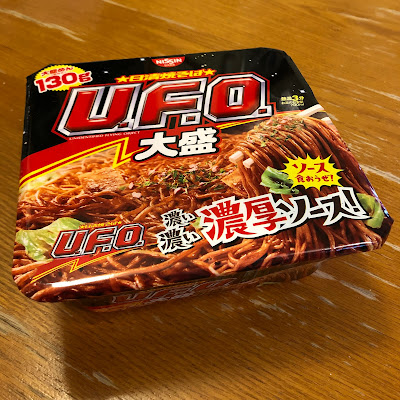

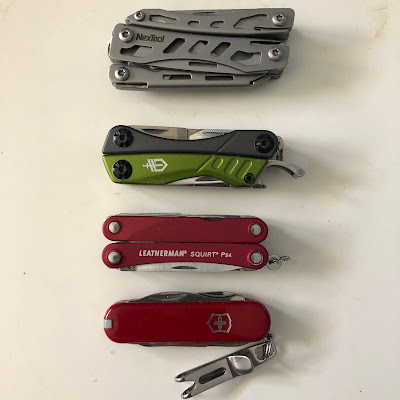
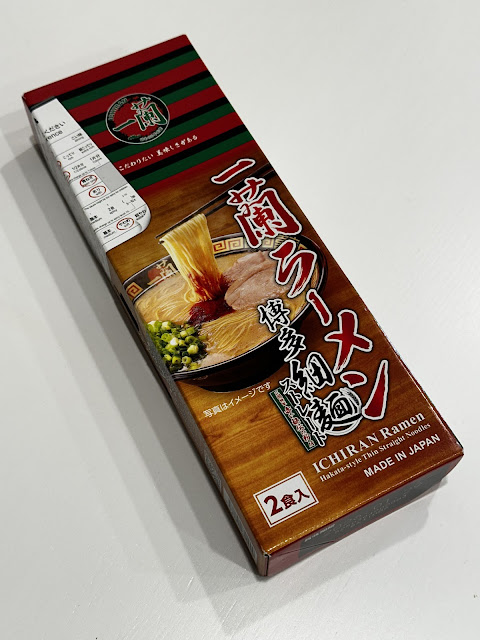






Comments
Post a Comment